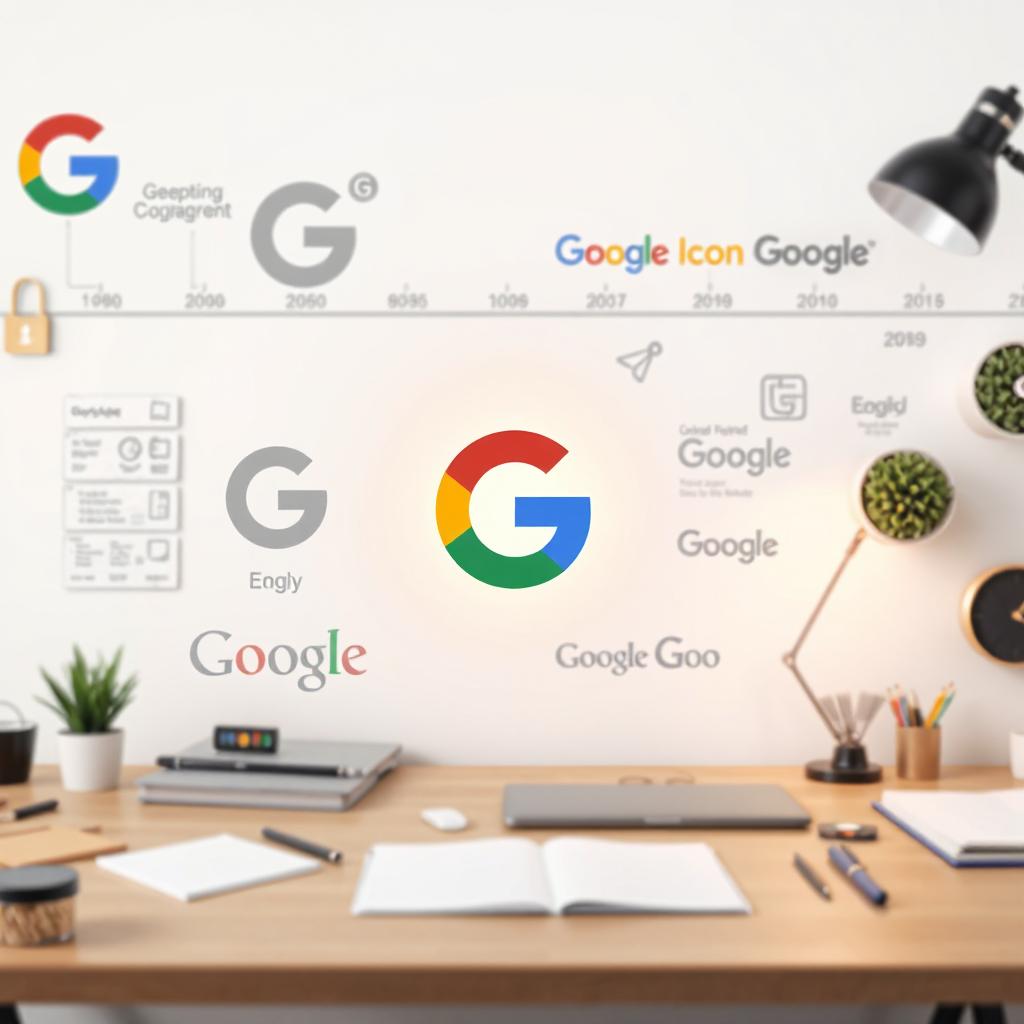Table of Contents
ToggleIntroduction
- The Google icon is one of the most recognized symbols in the digital world. Whether you use Google Search, Chrome, Drive, or any of its products, the Google icon represents innovation, trust, and global connectivity. But have you ever wondered about the evolution of Google’s icon, its meaning, and its impact on branding and user experience?
- In this blog, we will explore the fascinating history of the icon of Google, its transformation over the years, and how it influences users worldwide. We will also dive into why the Google icon plays a crucial role in digital advertising, search engine optimization (SEO), and user engagement, leading to high eCPM (effective cost per thousand impressions), CPC (cost per click), and RPM (revenue per thousand impressions) for publishers and advertisers.
The Evolution of Google’s Icon
Google has been continuously evolving since its inception in 1998. Its icon and logo design have gone through several changes, each symbolizing a new era of digital transformation.
1. The Original Google Icon (1998 – 1999)
- In 1998, when Larry Page and Sergey Brin founded Google, the company used a simple yet colorful icon and logo that reflected a playful and creative brand identity. The colors (blue, red, yellow, and green) were selected to convey a sense of fun and approachability.
2. The Refined Google Icon (1999 – 2010)
- By 1999, Google refined its icon by improving the font and adding subtle shadows, giving it a more polished look. The 3D shading and drop shadows made the logo stand out, making it instantly recognizable.
3. The Flat and Minimalistic Google Icon (2010 – 2015)
- With the rise of flat design trends, Google removed the shadows and moved towards a more minimalistic and modern design. This change improved scalability and made the icon more adaptable to different screen sizes and devices.
4. The Current Google Icon (2015 – Present)
- In 2015, Google introduced its sans-serif typeface and a new identity that aligned with its focus on mobile-friendly experiences. The icon became more refined, simpler, and bolder, making it easier to recognize across all platforms.
What Does the Google Icon Represent?
The Google icon is not just a logo; it is a symbol of trust, accessibility, and technological advancement. Here’s what each color in the Google icon represents:
- Blue: Stability and reliability (Google Search, Google Chrome)
- Red: Passion and energy (YouTube, Google Ads)
- Yellow: Happiness and optimism (Google Photos, Google Keep)
- Green: Growth and innovation (Android, Google Drive)
These colors create a subconscious connection with users, reinforcing Google’s mission to make information universally accessible and useful.
The Google Icon and Digital Advertising: How It Impacts eCPM, CPC, and RPM
- Google’s dominance in the online space means that advertisers and publishers heavily rely on its ecosystem to generate revenue. The Google icon’s strong brand recognition plays a significant role in advertising success, directly affecting:
1. eCPM (Effective Cost Per Mille)
- eCPM measures the revenue generated per thousand ad impressions. Since Google is a trusted brand, ads appearing on Google platforms tend to have higher visibility and engagement, leading to increased eCPM.
2. CPC (Cost Per Click)
- Advertisers bid more for ad placements on Google-related searches and platforms. This results in higher CPC rates, meaning every click on an ad generates more revenue.
3. RPM (Revenue Per Thousand Impressions)
- For publishers using Google AdSense, the Google icon plays an indirect role in boosting RPM. A well-optimized site with Google-branded elements (like Google Fonts, Google Login, and structured data for rich snippets) often attracts higher-paying advertisers.
Tips to Increase eCPM, CPC, and RPM Using Google’s Branding
- Use Google-friendly SEO practices to rank higher in search results.
- Leverage Google AMP (Accelerated Mobile Pages) for faster load times and better ad performance.
- Place high-quality Google Ads in optimal positions to maximize engagement.
- Utilize Google Analytics to track visitor behavior and optimize revenue generation.
The Influence of the Google Icon on User Engagement
Google’s icon and branding have a profound impact on user engagement, influencing how people interact with Google products.
1. Trust and Credibility
- The Google icon assures users that they are engaging with a legitimate service. This trust translates to higher conversion rates for businesses advertising on Google platforms.
2. Seamless User Experience
- Google’s icon design is optimized for clarity and simplicity, ensuring that users can easily recognize and navigate Google’s ecosystem without confusion.
3. Brand Recognition in Mobile and Desktop Interfaces
- With billions of users across desktop and mobile devices, the Google icon is a daily part of people’s digital lives, making it a powerful branding tool.
Google Icons in Various Applications
Google’s icon is used across various applications, each with its unique functionality:
- Google Search Icon: The blue “G” icon that users click to start a search.
- Google Chrome Icon: The colorful circular icon representing the world’s most popular browser.
- Google Drive Icon: A triangular icon symbolizing cloud storage and collaboration.
- Google Maps Icon: A pin-shaped icon guiding users through navigation.
- Google Photos Icon: A windmill-like shape that organizes and stores memories.
These icons have become integral to everyday digital interactions, reinforcing Google’s brand identity globally.
Conclusion: The Power of the Google Icon in the Digital World
- The icon of Google is more than just a visual symbol; it is a representation of innovation, trust, and accessibility. As Google continues to evolve, its icon remains a fundamental part of its branding strategy, influencing user behavior, advertising revenue, and digital engagement.
- For advertisers and publishers, leveraging the power of Google’s ecosystem can lead to higher eCPM, CPC, and RPM, maximizing digital revenue opportunities. Whether you are a marketer, content creator, or business owner, understanding the significance of the Google icon can help you build a stronger digital presence.
- So the next time you see the Google icon, remember—it’s not just an image; it’s a global symbol of the internet’s most powerful brand.
FAQs About the Google Icon
1. Why does the Google icon have four colors? The colors represent Google’s playful and inclusive brand identity, emphasizing creativity and innovation.
2. How often does Google change its icon? Google updates its branding occasionally to align with design trends and improve user experience.
3. Does the Google icon impact SEO? Yes, having Google-branded elements on your website can improve trust signals, leading to better rankings and ad revenue.
4. How can I optimize my website for higher CPC and RPM? Focus on high-quality content, Google-friendly SEO, and strategic ad placements to attract higher-paying advertisers.






